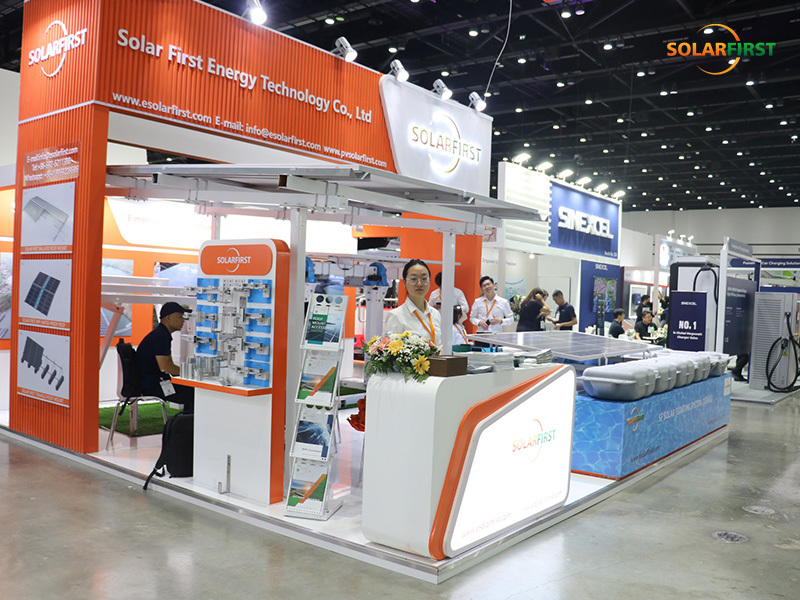The Future of Outdoor Lighting: Why Wind-Solar Hybrid Street Lights Are Game Changers
Release time:
Aug 23,2025
Summary:The Future of Outdoor Lighting: Why Wind-Solar Hybrid Street Lights Are Game Changers
Table of Contents
1. Introduction to Wind-Solar Hybrid Street Lights
2. Understanding Wind-Solar Hybrid Technology
3. The Benefits of Wind-Solar Hybrid Street Lights
4. Environmental Impact and Sustainability
5. Cost-Effectiveness of Hybrid Lighting Solutions
6. Applications of Wind-Solar Hybrid Stre
The Future of Outdoor Lighting: Why Wind-Solar Hybrid Street Lights Are Game Changers
Table of Contents
- 1. Introduction to Wind-Solar Hybrid Street Lights
- 2. Understanding Wind-Solar Hybrid Technology
- 3. The Benefits of Wind-Solar Hybrid Street Lights
- 4. Environmental Impact and Sustainability
- 5. Cost-Effectiveness of Hybrid Lighting Solutions
- 6. Applications of Wind-Solar Hybrid Street Lights
- 7. Future Trends in Outdoor Lighting Technology
- 8. Conclusion: The Bright Future Ahead
- 9. FAQs about Wind-Solar Hybrid Street Lights
1. Introduction to Wind-Solar Hybrid Street Lights
As urban areas continue to expand, the demand for sustainable and efficient outdoor lighting solutions has never been greater. **Wind-solar hybrid street lights** have emerged as a revolutionary technology that combines the power of wind and solar energy to provide reliable illumination for roads, streets, and public spaces. This innovative approach addresses several key challenges faced by traditional lighting systems, including energy consumption, maintenance costs, and environmental impact.
In this article, we will explore the advantages and potential of wind-solar hybrid street lights, showcasing how they are transforming the future of outdoor lighting.
2. Understanding Wind-Solar Hybrid Technology
Wind-solar hybrid street lights integrate both wind turbines and solar panels into a single unit. This combination allows the system to harness energy from two renewable sources, ensuring a constant power supply even in varying weather conditions.
The Components of Wind-Solar Hybrid Street Lights
1. **Solar Panels**: These panels capture sunlight and convert it into electricity, primarily during the day when energy demand is typically lower.
2. **Wind Turbines**: Small wind turbines generate electricity from wind energy, supplementing the solar power, especially at night or during cloudy weather.
3. **LED Lighting**: Modern hybrid street lights employ energy-efficient LED technology, offering brighter and longer-lasting illumination compared to traditional incandescent bulbs.
4. **Battery Storage**: Integrated battery systems store excess energy generated during peak production times, ensuring that the lights operate consistently throughout the night.
3. The Benefits of Wind-Solar Hybrid Street Lights
The adoption of wind-solar hybrid street lights presents numerous advantages, making them a compelling choice for municipalities and urban planners.
Energy Independence
Hybrid street lights reduce reliance on grid electricity, providing communities with a sustainable solution that lowers energy costs and enhances energy independence. By utilizing renewable energy sources, these lights can operate effectively even in remote areas without access to conventional power grids.
Reduced Carbon Footprint
One of the most significant benefits is the reduction of greenhouse gas emissions. By generating energy from renewable sources, cities can decrease their carbon footprint and contribute to global sustainability goals.
Cost Savings on Maintenance
Traditional street lighting systems require regular maintenance and replacement of bulbs. In contrast, hybrid street lights utilize durable LED technology with a longer lifespan, leading to reduced maintenance costs and associated labor expenses.
Enhanced Safety and Visibility
With advanced lighting technology, wind-solar hybrid street lights provide bright, consistent illumination, enhancing safety for pedestrians and drivers alike. Improved visibility in public areas can also deter crime and make communities feel safer.
4. Environmental Impact and Sustainability
The integration of wind-solar hybrid street lights aligns with global efforts to combat climate change and promote sustainability. These lighting systems offer a **cleaner alternative** to fossil fuel-based energy sources.
Reducing Light Pollution
By employing intelligent lighting controls, wind-solar hybrids can adjust brightness levels based on real-time conditions, reducing light pollution. This feature not only conserves energy but also minimizes disruptions to local wildlife and ecosystems.
Supporting Biodiversity
By reducing reliance on traditional energy sources, hybrid street lights contribute to the preservation of natural habitats. This is particularly important in urban environments where biodiversity is often compromised.
5. Cost-Effectiveness of Hybrid Lighting Solutions
While the initial investment for wind-solar hybrid street lights may be higher than traditional lighting, the long-term savings make them a **cost-effective solution** for municipalities.
Lower Operational Costs
By utilizing free energy from the sun and wind, operational costs can be significantly reduced. Over time, the savings on electricity bills and maintenance costs can outweigh the initial investment.
Government Incentives and Funding
Many governments offer incentives for renewable energy projects, including grants and subsidies for installing hybrid street lights. This financial assistance can further enhance the cost-effectiveness of such systems.
6. Applications of Wind-Solar Hybrid Street Lights
The versatility of wind-solar hybrid street lights makes them suitable for various applications, adapting to diverse environmental and community needs.
Urban Areas
In metropolitan settings, hybrid street lights can illuminate busy streets, parks, and pedestrian pathways, ensuring safety and accessibility.
Rural and Remote Locations
These lighting systems are particularly valuable in rural areas where extending electrical infrastructure is impractical. Wind-solar hybrids provide a reliable and sustainable lighting solution for remote communities.
Disaster Relief and Emergency Situations
In the aftermath of natural disasters, restoring power can take time. Hybrid street lights can serve as temporary lighting solutions, providing essential illumination until traditional services are restored.
7. Future Trends in Outdoor Lighting Technology
As technology continues to evolve, so too will the capabilities of wind-solar hybrid street lights.
Smart Lighting Integration
The future of outdoor lighting lies in smart technology. Integrating sensors and IoT connectivity into hybrid street lights allows for data collection on traffic patterns, weather conditions, and energy usage, optimizing performance and sustainability.
Advanced Energy Storage Solutions
Improvements in battery technology will enhance the energy storage capabilities of hybrid street lights, providing even greater reliability and efficiency.
Increased Public Awareness and Adoption
As communities become more aware of the benefits of renewable energy, the adoption of wind-solar hybrid street lights is expected to grow. Education and outreach will play a critical role in promoting these sustainable solutions.
8. Conclusion: The Bright Future Ahead
Wind-solar hybrid street lights represent a significant advancement in outdoor lighting technology, offering a sustainable, efficient, and cost-effective solution for urban and rural areas alike. By harnessing the power of both wind and solar energy, these innovative systems not only enhance safety and visibility but also contribute to a greener future. As technology advances and public awareness increases, we can expect to see a broader implementation of hybrid lighting solutions, paving the way for a more sustainable, illuminated world.
9. FAQs about Wind-Solar Hybrid Street Lights
1. What are wind-solar hybrid street lights?
Wind-solar hybrid street lights combine solar panels and wind turbines to generate electricity for outdoor lighting, providing a sustainable and renewable energy source.
2. How do wind-solar hybrid street lights work?
These systems harness energy from both wind and solar sources, storing excess energy in batteries for consistent illumination during nighttime or cloudy weather.
3. What are the benefits of using hybrid street lights?
Benefits include energy independence, reduced carbon footprint, lower maintenance costs, and enhanced safety for public spaces.
4. Are hybrid street lights cost-effective?
While initial costs may be higher, long-term savings on energy and maintenance make hybrid street lights a cost-effective solution.
5. Can wind-solar hybrid street lights be installed in rural areas?
Yes, they are particularly suitable for rural and remote locations where traditional electrical infrastructure is lacking, providing reliable, off-grid lighting solutions.
In conclusion, wind-solar hybrid street lights embody the future of outdoor lighting, offering a sustainable and efficient alternative to conventional systems. The combination of renewable energy sources not only addresses the growing demand for energy-efficient solutions but also promotes environmental sustainability. As technology continues to advance, the adoption of these innovative lighting systems will undoubtedly pave the way for brighter, greener communities.


